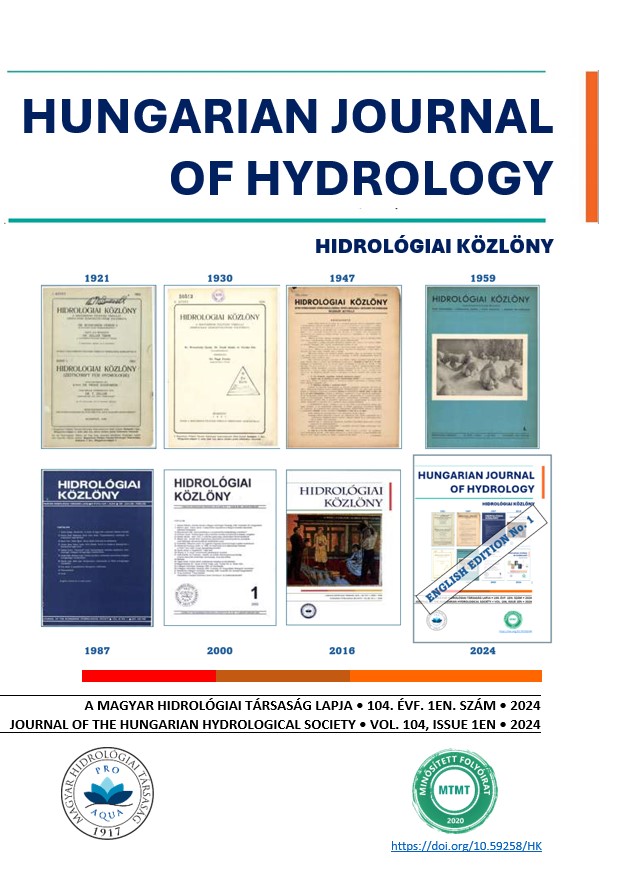Landscape – Soundscape – Waterscape Concept for an inter- and transdiscipli
Abstract
This paper argues that integrated resource management (both stocks and fluxes) must be embedded into a transdisciplinary context. Preliminary, yet essential debates, plans and formulation of aspirations need to be formulated with the active participation of legitimate stakeholders and affected citizens. This implies, that next to the key integration of land- and water resources management voices articulating local needs, expressing and protecting cultural values and social preferences are to be heard and understood.
The context of Landscape-Soundscape-Waterscape is recommended to serve as a conceptual model of dialogues to set consensus-based objectives and constraints for the detailed professional elaboration of development, restauration and protection plans for water-dominated landscapes and resource use. This multi-dimensional dialogue is even more important when several sectoral concerns are to be taken into a so called nexus consideration.
The trans- and interdisciplinary model framework of Landscape-Soundscape-Waterscape is proposed to be tested first in case studies where the spatial extent of most of the resource use and protection interactions correspond with the living space (or homescape) used, intimately known and loved by those whose “sounds” should be captured and considered for the sake of sustainable future.
References
Bogárdi J., Mizsei Z., Tóth G. (2021). Landscape, Soundscape, Waterscape: egy jövőbe mutató regionális fejlesz-tés alapelveinek vázlata. Vasi Szemle, LXXV. évfolyam 5. szám. Különszám FTI-iASK pp 137-144, Szombathely.
Bogárdi J. (2022). Vízből vagyok, vízzé leszek – Miért forog a víz körforgása körül a világ? OVF Vízügyi Tudo-mányos Tanács „Jövőépítés a Vízgazdálkodásban” sorozat 6. kötete, Typotex, Budapest, p. 432.
Bogardi, J.J., Szöllősi-Nagy, A. (2003). Las politicas del agua en el siglo XXI. Una revisión de Johannesburgo. In-genieria del Agua 10: 3 pp 259-279
FAO (1976). A Framework for Land Evaluation. = FAO soils bulletin, p.76.
FAO (2017). Landscapes for life. Approaches to landscape management for sustainable food and agriculture. Rome, FAO, p. 47. http://www.fao.org/3/i8324en/i8324en.pdf (Accessed: July 9, 2021).
Grant, C.F., Bartleet, B.-L., Barclay, L., Lamont, J., Sur, S. (2021). Integrating music and sound into efforts to ad-vance the sustainable development goals in the Asia-Pacific: case studies from Indonesia, Vanuatu and Australia. International Journal of Cultural Policy. https://doi.org/10.1080/10286632.2021.1971206
Ibisch, R.B., Bogardi, J.J., Borchardt, D. (2016). Integrated water resources management. Concept, research and implementation. In: Integrated water resources management. Concept, research and implementation. Borchardt, D., Bogardi, J.J.; Ibisch, R.B. (editors), Springer Cham, pp. 3–32. p.
Hoff, H. (2011). Understanding the Nexus. Background Paper for the Bonn 2011 Conference: The Water, Energy and Food Security Nexus. Stockholm Environment Institute, Stockholm. p. 51.
Johannesburg Plan of Implementation (2002) - https://documents.un.org/doc/undoc/gen/n02/636/93/pdf/n0263693.pdf
Karthe, D., Bogardi, J.J., Borchardt, D. (2021). Water Resources Management: Integrated and Adaptive Decision Making pp. 365–381. Chapter 12 in Bogardi, J.J., Gupta, J., Nandalal, K.D.W., Salamé, L., van Nooijen, R.R.P., Ku-mar, N., Tingsanchali, T., Bhaduri, A., Kolechkina, A.G. (Eds.) 2021: Handbook of Water Resources Management: Discourses, Concepts and Examples. Springer, Cham, Switzerland, 810 p.
Lawford, R., Bogardi, J., Marx, S., Jain, S., Pahl-Wostl, C., Knüppe, K., Ringler, C., Lansigan, F., Meza, F. (2013). Basin perspectives on the Water-Energy-Food Security Nexus. Current Opinion in Environmental Sustainability, Vol-ume 5, Issue 6, p. 607–616. ISSN 1877-3435, https://doi.org/10.1016/j.cosust.2013.11.005
Merriam-Webster dictionary (1980). Webster’s Third New International Dictionary (Ed. in chief: Gove, Babcock.) Springfield, Mass., 2662 p.
Takács, R. (2023). https://ligetmuhely.com/liget/takacs-rajmund-eltuno-feltuno-vizek-nyomaban/
UNESCO (2004). The Volga Vision: UNESCO’s interdisciplinary initiative for the sustainable development of the Volga-Caspian Basin. 144 p. https://unesdoc.unesco.org/search/8244cb88-e663-422e-a2eb-e1691754c03e
United Nations (2021). https://www.un.org/sustainabledevelopment/blog/2021/04/sdgs-and-music-agents-of-change-in-action/
Z. Karvalics L. (2016). „A nagy természetnek remek kis ékszere”. Víz és vízpart a tudás-alapú városfejlesztésben. Információs Társadalom, XVI. évf. 2. szám, pp 44-60. http://dx.doi.org/10.22503/inftars.XVI.2016.2.3
Copyright (c) 2024 János Bogárdi , Zoltán Mizsei, Gergely Tóth

This work is licensed under a Creative Commons Attribution-NonCommercial-ShareAlike 4.0 International License.




